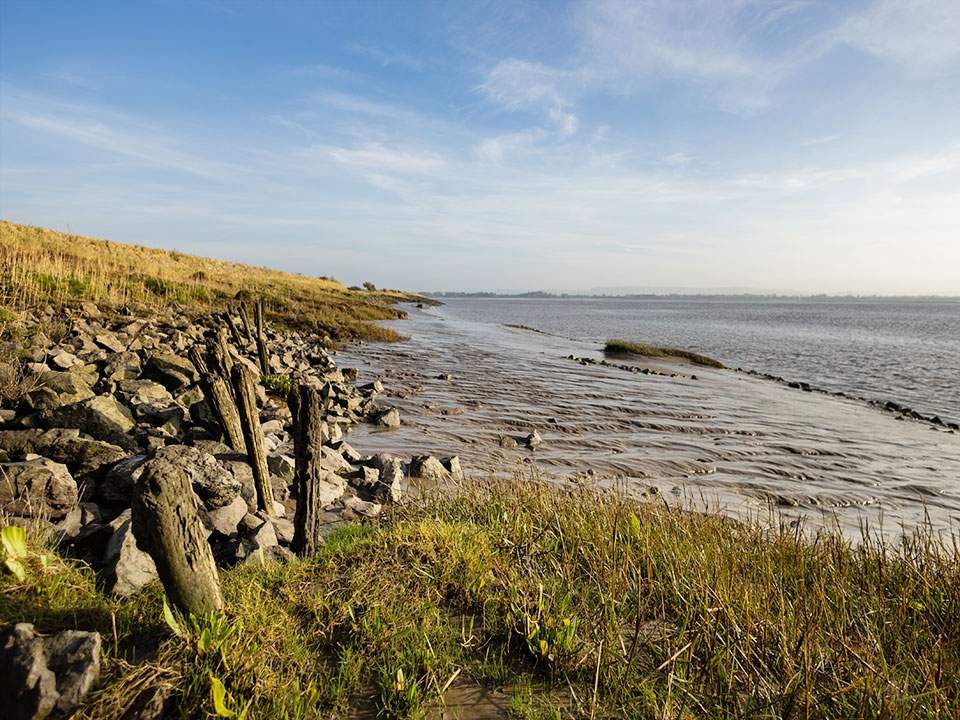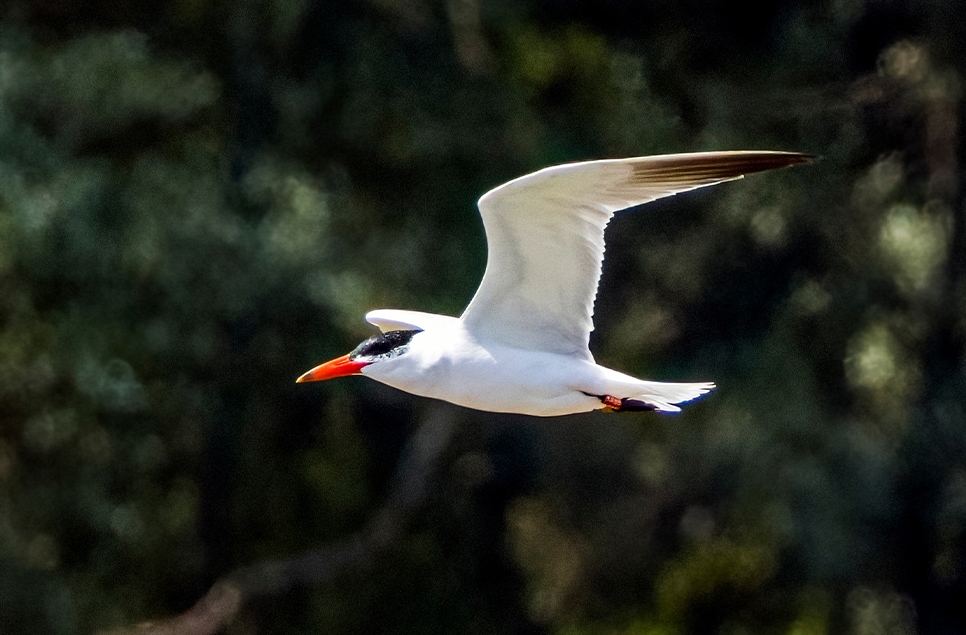Ten of our favourite children's books and stories featuring wetlands
Woods feature strongly in stories from our childhood – Hansel and Gretel, Little Red Riding Hood - yet wetlands and water also play a prominent role in many of our favourite books.
Throughout history, the natural world has been a place of magic and mystery, capable of providing food and shelter but also leaving us at the mercy of the elements. Woods feature strongly in stories from our childhood – Hansel and Gretel, Little Red Riding Hood – so much so that some say that a journey into the woods is an allegory for every story ever told. Yet wetlands play a prominent role too in many of our favourite stories.
We're all missing the great outdoors and nature in our lives at the moment. So if you're looking for a new storybook to entertain the kids during those long lockdown evenings, why not bring the magic of water into your home with one of these classic tales set in wetlands?
Wetlands for journeys
As in real life, waterways are the setting for a journey, and in books, it is often an escape.
1. The Adventures of Tom Sawyer and Huckleberry Finn
For Tom Sawyer and Huckleberry Finn the great Mississippi represents freedom and adventure. They hide out on Jackson’s Island and Huckleberry drifts downstream past grounded paddle-ships on a raft.
The fact behind the fiction: The Mississippi is the main river to the second-largest drainage system in the North American continent, and people have lived alongside it for thousands of years. The name Mississippi comes from the Anishinaabe word Misi-ziibi, meaning Great River.
2. His Dark Materials
In Phillip Pullman’s novels, his hero Lyra twice escapes by water. First, as a baby she is rescued from the sinister Magisterium after heavy rain turns the Thames into vast inland sea, and the flood takes her from Oxford to the safety of London. Later in life she’s rescued by the riverboat-dwelling Gyptians, and taken to their hideout deep in the Fens beyond the reach of the authorities.
The fact behind the fiction: Fens are unique wetland habitats, and different from bogs in that they’re high in mineral-rich surface water, and have a high diversity of plant species – including carnivorous plants!

3. The Lion, the Witch and the Wardrobe
In this classic book, the four children lost in Narnia are befriended by Mr and Mrs Beaver, who give them shelter in their lodge. But soon afterwards the snow and ice begins to melt and yet again our heroes have to journey across a flooded land to reach the climax of the story. The changeability of water and the arrival of spring is a key theme.
The fact behind the fiction: The beavers are two of the most beloved characters of this Narnia novel, and were native to the UK before becoming extinct in the 16th century. Beavers are now a protected species in Scotland after colonising wetlands along the River Tay.

Spooky wetlands
Like woods, wetlands are sometimes eerie wildernesses.
4. The Lord of the Rings
In the Lord of the Rings our heroes, Frodo and Samwise are led by Gollum through marshes known as The Mere of Dead Faces. Arguably, Tolkien didn’t do much for furthering support for wetlands.
The fact behind the fiction: Luckily for us, a ‘mere’ in real life is simply an old-fashioned word for a shallow, wide lake – Lake Windermere, Grasmere and our own WWT Martin Mere are well-known examples.

5. The Neverending Story
The theme is taken up in The Neverending Story to devastating effect. The hero Atreyu must cross The Swamp of Sadness, a place where despair will literally drag you under the water to your death. In a scene that has haunted many childhoods, Atreyu’s horse, Artax, becomes the swamp’s unfortunate victim.
The fact behind the fiction: A swamp is a forested wetland, and like all natural places, it can be dangerous if not treated with respect. Historically, people haven’t appreciated swamps (see the phrase ‘drain the swamp’), but like other wetlands they’re now recognised to play a crucial part in flood control, water purification, providing food and resources, carbon storing and places for wildlife to live.
Idyllic wetlands
Wetlands are also often the setting for more gentle adventures.
6. The Wind in the Willows
The Wind in the Willows has inspired generations of nature lovers with its tale of Ratty and Toad on the river. But did you know that Ratty was actually a water vole?
The fact behind the fiction: This popular tale seems to have increased confusion between brown rats and water voles. Water voles are round, herbivorous creatures with furry tails – listen out for the ‘plop’ noise by a riverbank and you will know if a water vole’s about. Here's a quick guide to telling the difference between water voles and rats.

7. Swallows and Amazons
The Lake District is the setting for the ultimate childhood adventure story, Swallows and Amazons. In a concept that might seem unusual to families of today, the novel sees children roaming free, sailing to remote islands and solving mysteries.
The fact behind the fiction: The initial antagonist, the children’s uncle Jim (who they nickname Captain Flint) is considered to be in some ways modelled on writer Arthur Ransome’s own experience of teaching his friends’ children to sail in the Lake District, and is an homage to the magical transformative qualities of this natural setting.
8. Winnie the Pooh
Perhaps the most enduring image of wetland bliss comes from Winnie the Pooh. Who can think of a better way to pass the time than playing Poohsticks off a bridge?
The fact behind the fiction: You can play Poohsticks in the real Hundred-Acre wood, Ashdown Forest.
9. The Ugly Duckling
Although it’s just a short tale by Danish author Hans Christian Andersen, the story of the much bullied little cygnet who seems different from all the other animals on the farmyard is well-known, and often seen as a tale about personal transformation and finding your place in the world.
The fact behind the fiction: The tale’s depiction of swan life shows the relationship these birds have with their wetland homes. The mute swan is the national bird of Denmark, a common sight in the UK, alongside our rarer Bewick's and whooper swans of the tundra. The swans would have arrived back in their homes in spring to commence their breeding season, when the ugly duckling encounters them.

An inspiring wetland?
10. Peter Pan
The conservationist Sir Peter Scott was named after the character Peter Pan and the author JM Barrie was his godfather, gifting him life membership of London Zoo for his christening. It may be a stretch too far, but a wetland – Mermaid’s Lagoon – was the main setting for the action in the play and book of Peter Pan. Wendy and the children spend happy hours playing in the water, trying to win over the unfriendly mermaids, until Captain Hook arrives with his pirates and the adventure continues. Could it be that this fantastical wetland, so connected to his childhood, in some way inspired Sir Peter in his later life?
Is there a classic we’ve missed off the list? Why not share your favourite with us on Twitter.
Wetlands have been long under-valued and degraded, but they’re crucial to wildlife and people. Learn more about wetlands


